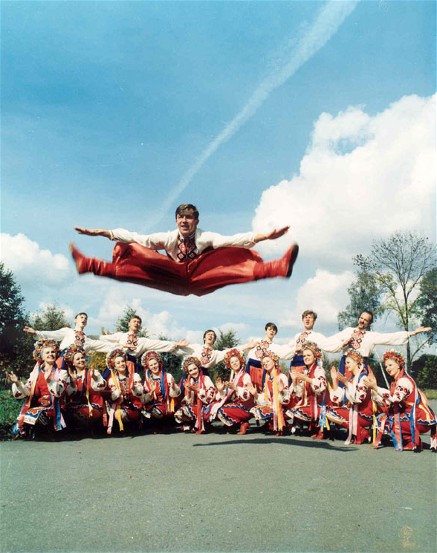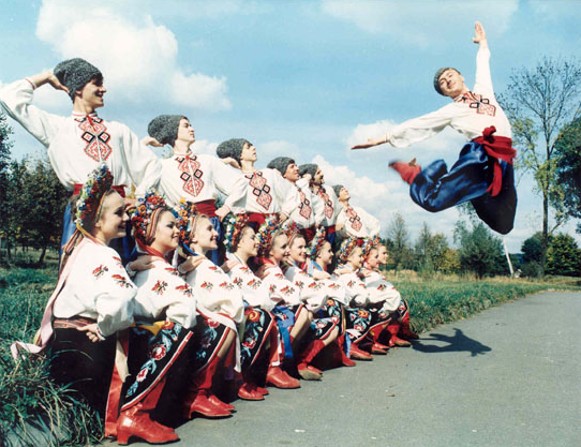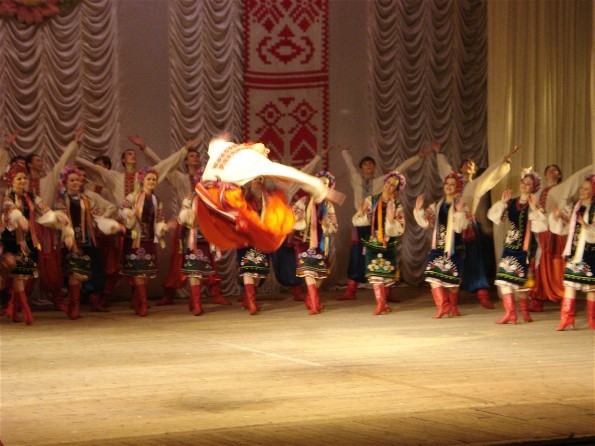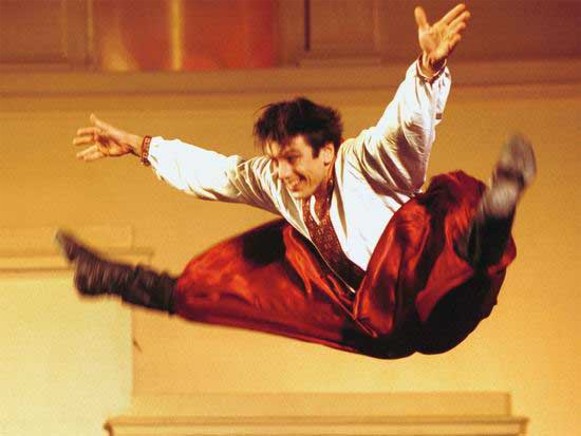Hopak
Hopak. An original Ukrainian folk dance of an improvised nature. Its name is derived from hopaty: ‘to leap and stamp one's feet.’ The hopak arose as a male dance at the Zaporozhian Sich in the 16th century and gradually spread throughout Ukraine, particularly through the Kyiv region. As it spread it became transformed into a group dance performed by couples with males retaining the lead role. It has several variants: a solo dance, a group and couple dance, and in Western Ukraine a circular dance (hopak-kolo). Its charm and attractiveness lie in the hopak's freedom of improvisation, which allows individual dancers to display their talents within a larger dance group. The basic male movements are leaps, squats, stretches on the ground and in the air, and various turns; the female movements are quick steps, bends, and turns. Solo performances in the hopak often involve a competition in virtuosity. Complex acrobatic movements are common in stage arrangements of the dance. The tunes to which the dance is performed vary greatly. Some of them are folk songs, such as ‘Od Kyieva do Luben’ and ‘Hop, moï hrechanyky.’ Others are original compositions. The tempo is fast; the beat is 2/4. The hopak is the culminating dance in the repertoire of almost all Ukrainian dance ensembles. It is very popular among Ukrainians outside Ukraine. Hopak melodies often appear in classical music: in such operas as Semen Hulak-Artemovsky's Zaporozhian Cossack beyond the Danube, Mykola Lysenko's Taras Bulba, Petro Sokalsky's The Defense of Dubno, and Borys Yanovsky's Black Sea Duma; in such ballets as A. Svechnikov's Marusia Bohuslavka and Vladimir Libovicki's Marusia; and in Andrii Shtoharenko's symphonic suite In Memory of Lesia Ukrainka.
Mykola Mushynka
[This article originally appeared in the Encyclopedia of Ukraine, vol. 2 (1989).]



